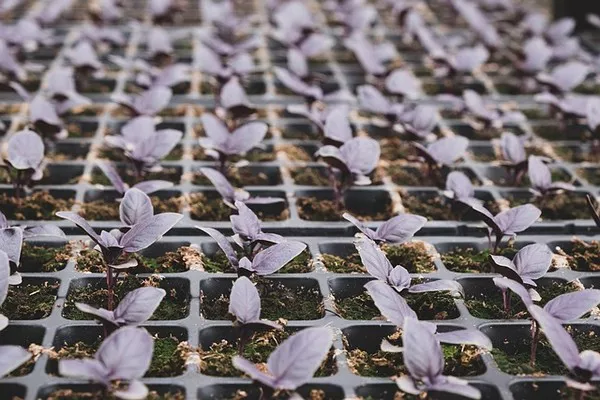Basil (Ocimum basilicum) is an aromatic herb cherished for its distinctive fragrance and culinary applications. From garnishing pasta dishes to flavoring sauces, basil has secured a pivotal position in various cuisines around the world. However, there comes a stage in the life cycle of basil plants when they shift their focus from producing lush leaves to developing flowers. This transition, known as flowering, marks an intriguing phase in the life of basil plants and holds implications not only for the botanical realm but also for its use in culinary practices.
See Also: Utilizing Basil Flowers: Enhancing Culinary Delights & Beyond
Botanical Perspective on Basil Flowering
The flowering of basil is a natural and essential biological process that occurs as part of the plant’s reproductive cycle. Basil, like many other plants, invests its energy in growing leaves during its vegetative phase. These leaves serve as photosynthetic factories, converting light energy into chemical energy through the process of photosynthesis. As the plant matures, it undergoes hormonal changes triggered by factors such as age, environmental conditions, and genetics. These changes prompt the plant to divert its resources from leaf growth to flower production.
The process of flowering is regulated by a complex interplay of hormones, primarily auxins and gibberellins, along with external cues like day length and temperature. Once the balance between these factors shifts, the plant initiates a series of physiological changes that culminate in the development of flower buds. The formation of flower buds signifies the readiness of the plant to reproduce and set seeds.
Stages of Basil Flowering
Basil plants typically exhibit a sequence of developmental stages leading up to flowering. Initially, the plant produces new growth in the form of leaves and branches. As it matures, lateral shoots and axillary buds emerge, and the plant’s energy is channeled into elongating these branches and developing new nodes. These nodes eventually give rise to clusters of flower buds.
The transition from vegetative growth to flowering is often accompanied by changes in the plant’s appearance. The growth rate of leaves may slow down, and the characteristic aroma of basil might diminish or change slightly. The leaves could become slightly smaller and might even exhibit a different coloration, reflecting the redistribution of nutrients and energy towards reproductive processes.
Culinary Implications of Basil Flowering
While basil’s flowering is a natural progression, it does have implications for its use in culinary endeavors. The most notable change that occurs when basil flowers is the alteration of flavor profile. The leaves of basil plants in their vegetative stage contain a higher concentration of essential oils, such as eugenol and citral, which contribute to the herb’s distinctive aroma and taste. As the plant shifts its focus to flower production, the concentration of these oils may decrease, leading to a milder and less intense flavor.
For culinary purposes, basil leaves are usually preferred in their prime, before flowering occurs. The period just before flowering is considered the peak of basil’s flavor potency. Chefs and home cooks often aim to harvest basil leaves during this stage to capitalize on their aromatic and flavorful qualities. This is particularly important in recipes where basil plays a central role, such as pesto sauces, salads, and bruschettas.
Harvesting Strategies and Prolonging Leaf Growth
To extend the vegetative stage and delay the flowering of basil plants, certain cultivation practices can be adopted. Regular pruning and pinching of the tips of the basil branches can help prevent the formation of flower buds. By removing the developing flower buds promptly, the plant is encouraged to continue producing leaves, maintaining its characteristic aroma and taste.
Additionally, managing the environmental conditions can influence the timing of flowering. Providing ample light, moderate temperatures, and well-draining soil can contribute to prolonging the vegetative phase of basil plants. Conversely, stressful conditions, such as extreme temperatures or water scarcity, might expedite the transition to flowering.
Conclusion
The phenomenon of basil flowering marks a significant transition in the life cycle of this beloved herb. From a botanical perspective, it exemplifies the intricate interplay of hormones, genetics, and environmental factors that govern plant development. Culinary enthusiasts and professionals recognize the importance of harvesting basil leaves before the flowering stage to capture its full aromatic and flavorful potential. By understanding the science behind basil flowering and implementing appropriate cultivation strategies, individuals can prolong the period of lush basil leaf growth and continue to savor its delightful taste and aroma in various culinary creations.


